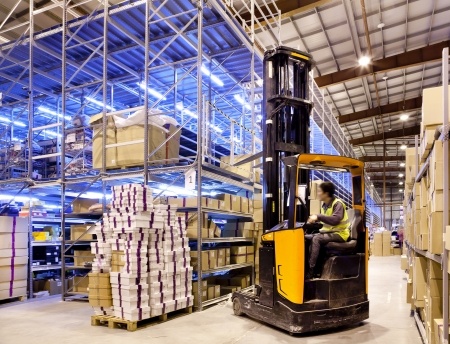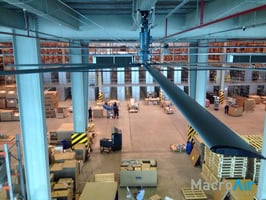Sweating Slab Syndrome (SSS) is a dangerous condition that plagues many warehouses and compromises...
Sweating Slab Syndrome and Humidity: Managing Building Conditions
Sweating Slab Syndrome (SSS) is a common problem in buildings with concrete surfaces. All kinds of facilities, from warehouses to museums to large retail stores, can be affected by SSS, especially in the warmer months of the year.
The key factor that causes SSS to become a problem in buildings with concrete floors is humidity. Let's examine exactly what SSS is. Let's look at its relationship to humidity and how to prevent this problem from endangering your staff and equipment.
What is Sweaty Slab Syndrome?
Sweating Slab Syndrome is a phenomenon where moisture develops on the surface of a concrete floor. This problem happens most often in buildings that have issues with their climate control or HVAC solutions. SSS makes floors slippery and more dangerous. Workers are at risk while walking or driving forklifts or other kinds of machinery across the floor. One common problem with SSS, for example, is that it wreaks havoc on the way that a forklift operates its brakes. This leads to skidding and steering malfunctions that can cause personal injury and/or the destruction of valuable company inventory and equipment.
Besides the dangers that SSS poses to building and employee safety, it can also be challenging to diagnose. There may be one or multiple reasons that a building comes down with SSS. The symptoms of this condition can vary in severity as time passes and seasons change. However, the most important element of climate control that should be monitored to get a handle on sweating slab syndrome is humidity.
The Link Between Humidity and Sweating Slab Syndrome
The reason that humidity causes Sweating Slab Syndrome has to do with the natural dew point of the air inside of a warehouse or large building. As windows and doors are opened and warm air is let in throughout the day, the air inside of the structure begins to increase in humidity to match outside humidity levels. As the humidity level in the air continues to rise, water vapor condenses on surfaces where the temperature is at or below the dew point. Concrete floors usually have cooler temperatures, which is why they are particularly susceptible to SSS.
Reducing Humidity to Solve Sweating Slab Syndrome
It's great to understand what SSS is and what causes it. However, this understanding alone doesn't help solve the problem.
In order to eliminate high levels of humidity, you need to create more airflow in the building. By doing so, the building attains a more even temperature throughout the space. Another name for this technique is thermal equalization. When your temperature is more even throughout the building, it reduces humidity and minimizes condensation on your concrete floors.

The Bottom Line
Sweating Slab Syndrome (SSS) can cause slip hazards and pose dangers to employees at your operation. This is especially dangerous to those who operate forklifts or move carts or pallets around within the space. The key to preventing SSS is to get greater control over the humidity in your building. Building managers can do this by designing HVAC solutions that provide sufficient airflow based on the space they need to cool so that humidity remains consistent throughout the building no matter what season it is.


